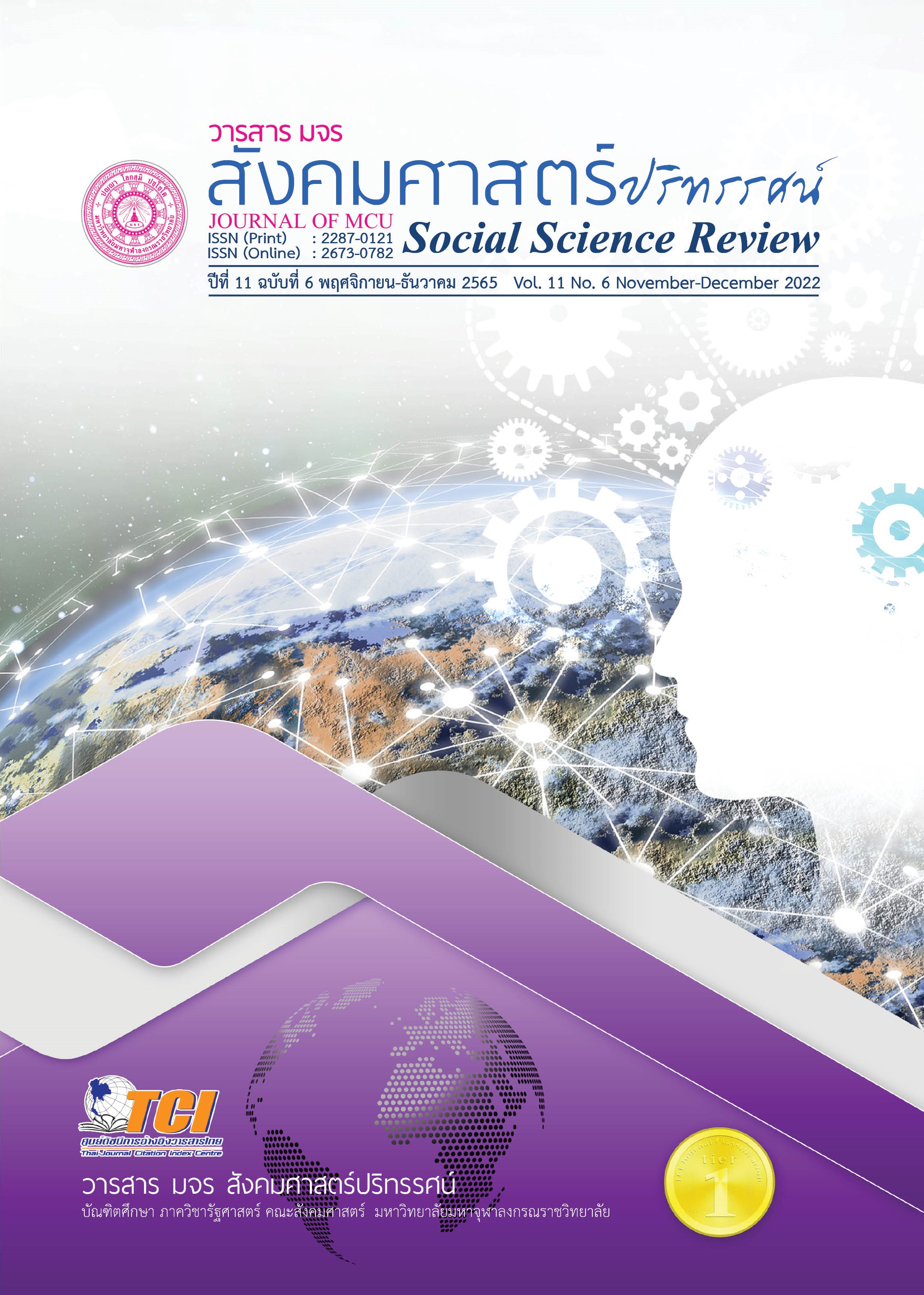EXPLORATORY FACTOR ANALYSIS OF TOURISM DESTINATION ATTRIBUTES AFFECTING TOURIST PERCEPTION OF A DESTINATION BRAND: A CASE STUDY OF SONGKHLA LAKE BASIN, MUANG DISTRICT, SONGKHLA PROVINCE
Keywords:
Destination Attributes, Tourist Perception, Destination Brand, Songkhla Lake BasinAbstract
This study aimed to identify the tourism destination attributes affecting tourist perception of Songkhla Lake Basin (SLB) brand, Muang district, Songkhla Province. Therefore, the Exploratory Factor Analysis (EFA) method was used to determine the underlying dimensions governing the full set of 46 items of SLB destination attributes. The study was conducted on 420 cases of Thai tourists by purposive and convenience sampling survey methods. The survey instruments used in the research were tested for validity and reliability before application. The Cronbach’s alpha was 0.894. The factor analysis generated 17 underlying dimensions of the destination attributes, which explain 74.153% of the total variance.
The finding indicated acceptable appropriateness of the indicators used for factor structure detection as measured by the Kaiser-Meyer-Olkin Measure of Sampling Adequacy (KMO) of 0.599 and the Bartlett’s test of sphericity was statistically significant (p < 0.001). According to the EFA study, component 1 consisting of travel convenience, a variety of public transportation, clear signage availability, and a variety of tourist activities, was perceived most favorably by Thai tourists, holding the greatest variance of 10.773%. In addition, independent t-test analysis was employed to identify factors influencing the destination brand’s perception. The study revealed only 2 components were identified as significant (p < 0.05), consisting of component 1 - accessibility and activity (p = 0.008) and component 5 - destination management (p = 0.042).
References
Assaf, A. G., & Josiassen, A. (2012). European vs. US airlines: Performance comparison in a dynamic market. Tourism Management, 33(2), 317-326.
Atinafu, B., & Muuz, H. (2017). An investigation of the potential attributes for tourist destination in six selected heritage sites of South Gondar, and the challenges in availing these heritage sites for tourists. Journal of Tourism and Hospitality, 6(3), 1-10.
Boit, J. C. (2013). The role of destination attributes and visitor satisfaction on tourist repeat visit intentions to Lake Nakuru National Park. Kenya: Western Illinois University.
Chahal, H., & Devi, A. (2015). Destination attributes and destination image relationship in volatile tourist destination: role of perceived risk. Metamorphosis, 14(2), 1-19.
Chen, C.-F., & Tsai, D. (2007). How destination image and evaluative factors affect behavioral intentions. Tourism Management, 28(4), 1115-1122.
Etikan, I. et al. (2016). Comparison of convenience sampling and purposive sampling. American journal of theoretical and applied statistics, 5(1), 1-4.
Farrokhi, F., & Mahmoudi-Hamidabad, A. (2012). Rethinking Convenience Sampling: Defining Quality Criteria. Theory & practice in language studies, 2(4).
Hassan, S. B., et al. (2010). Perception of destination branding measures: a case study of Alexandria destination marketing organizations. International Journal of Euro-Mediterranean Studies, 3(2), 271-288.
Hossain, M. K., & Islam, S. (2019). An Analysis of Destination Attributes to Enhance Tourism Competitiveness in Bangladesh. African Journal of Hospitality, Tourism and Leisure, 8(2).
Kim, J.-H. (2014). The antecedents of memorable tourism experiences: The development of a scale to measure the destination attributes associated with memorable experiences. Tourism Management, 44, 34-45.
Kulvadee Lamaijeen. (2015). A Model of The Development of Community-Based Tourism Management in Designated Areas for Sustainable Tourism (Doctor of Philosophy Integrated Tourism Management). Bangkok: National Institute of Development Administration,
Mahdzar, M., & Gani, A. A. (2018). Effects of Destination Attributes on Tourists’ Behavioral Intentions to Kuala Selangor.
Marshall, M. N. (1996). Sampling for qualitative research. Family practice, 13(6), 522-526.
Mistry, R. B. (2018). Influence of Destination Attributes Importance to Tourists’ Satisfaction-Gujarat Tourism.
National Statistical Office. (2020). Domestic Travellers by Province: 2009 - 2018. Retrieved fromhttp://statbbi.nso.go.th/staticreport/page/sector/en/17.aspx
Pike, S. (2005). Tourism destination branding complexity. Journal of Product & Brand Management, 14(4), 258-259. doi:10.1108/10610420510609267
Prachyakorn Chaiyakot, & Parichart Visuthismajarn. (2012). A pattern of rural tourism in the Songkhla Lake Basin, Thailand. International Journal of Management & Information Systems (Online), 16(2), 173.
Prebensen, N. K., et al. (2014). Creating experience value in tourism: Wallingford, Oxfordshire Boston, MA : CABI.
Qu, H., et al. (2011). A model of destination branding: Integrating the concepts of the branding and destination image. Tourism Management, 32(3), 465-476.
Ragavan, N. A., Subramonian, H., & Sharif, S. P. (2014). Tourists’ perceptions of destination travel attributes: An application to International tourists to Kuala Lumpur. Procedia-Social and Behavioral Sciences, 144(20), 403-411.
Shani, A., & Belhassen, Y. (2009). Tourism Destination Development and Branding Conference: 14–17 October 2009, Eilat, Israel. Anatolia, 20(2), 471-474.
Siripen Dabphet. (2016). Destination Choice between First-time and Repeat Tourists. Journal of Business, Economics and Communications, 9(2), 39-59.
Toral, S., et al. (2018). Identification of the unique attributes of tourist destinations from online reviews. Journal of Travel Research, 57(7), 908-919.
Vodeb, K., & Nemec Rudež, H. (2017). Which attributes are important to tourists in a mature seaside destination? A case of Opatija in Croatia. Turizam: međunarodni znanstveno-stručni časopis, 65(3), 267-269.
Wong, I. A. (2011). Using Destination Attributes to Promote Event Travel: The Case of Macau. Journal of Convention & Event Tourism, 12(4), 241-252.
World Tourism Organization. (2017). Why tourism? Tourism – an economic and social phenomenon. Retrieved from http://www2.unwto.org/content/why-tourism
Yamane, T. (1973). Statistics: An introduction analysis. New York: Harper & Row.
Downloads
Published
How to Cite
Issue
Section
License
Copyright (c) 2022 Journal of MCU Social Science Review

This work is licensed under a Creative Commons Attribution-NonCommercial-NoDerivatives 4.0 International License.
In order to conform the copyright law, all article authors must sign the consignment agreement to transfer the copyright to the Journal including the finally revised original articles. Besides, the article authors must declare that the articles will be printed in only the Journal of MCU Journal of Social Sciences. If there are pictures, tables or contents that were printed before, the article authors must receive permission from the authors in writing and show the evidence to the editor before the article is printed. If it does not conform to the set criteria, the editor will remove the article from the Journal without any exceptions.





